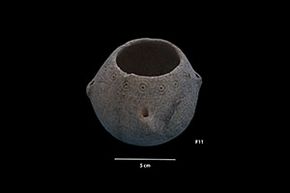 The complete globular soft-stone vessel found inside Grave 3 (IMTO archive).
The complete globular soft-stone vessel found inside Grave 3 (IMTO archive).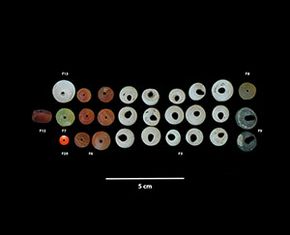 Beads of different materials and shapes found inside Grave 3 (IMTO archive).
Beads of different materials and shapes found inside Grave 3 (IMTO archive).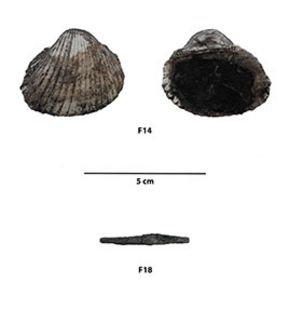 Anadara shell (F14) containing a black substance, along with a copper-base possible “kohl-stick” (F18) (IMTO archive).
Anadara shell (F14) containing a black substance, along with a copper-base possible “kohl-stick” (F18) (IMTO archive).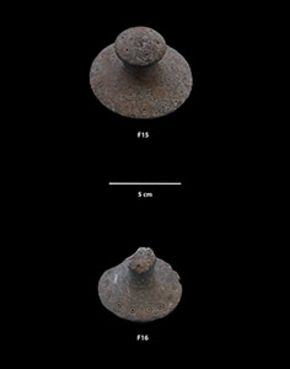 Two soft stone vessel lids: F15 decorated with the dot-in-circle motif, F16 with double dot-in-circle (IMTO archive).
Two soft stone vessel lids: F15 decorated with the dot-in-circle motif, F16 with double dot-in-circle (IMTO archive). Wadi Suq globular jar with black painted decoration found nearby G3 (IMTO archive).
Wadi Suq globular jar with black painted decoration found nearby G3 (IMTO archive). Early Iron Age spouted, carinated cup witnessing the frequentation of the area during this period (IMTO archive).
Early Iron Age spouted, carinated cup witnessing the frequentation of the area during this period (IMTO archive).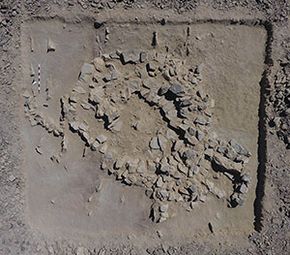
Grave 3 at the beginning of the work, following the removal of the surface deposit (IMTO archive).
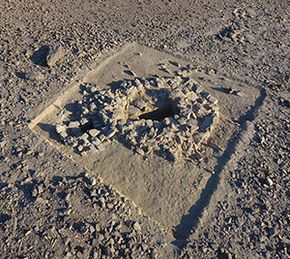
Grave 3 during the excavation, looking N (IMTO archive).
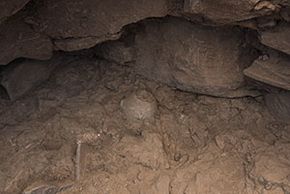
F11 in situ. (IMTO archive).
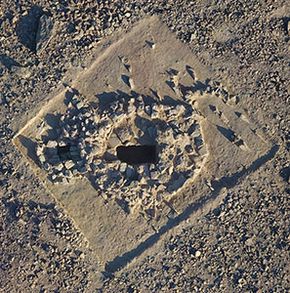
Orthophoto of G3 at the end of the excavation (IMTO archive).
